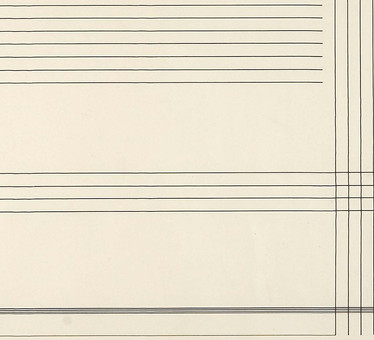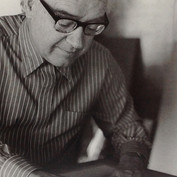Lothar Charoux

Viena, Austria, 1912 —
São Paulo, Brazil, 1987
Just let the view wander through the works of Lothar Charoux to see the richness of the essential. After all, everything is there, nothing else is needed in this immanent poetics of lines and geometry, an inherent softness that is not blocked by rigor, but, on the contrary, released by it.
Born in Vienna, Charoux emigrated to Brazil as a young man in 1928. Already in São Paulo, he studied at the Lyceum of Arts and Crafts, where he graduated during the 1930s. His first works are figurative, landscapes and portraits, many of them expressionist. . But it is not long before the artist dismisses the commitment to representation and turns to what is concrete in painting: lines and colors. Pioneer in the research on geometric abstraction, Charoux participated in 1952 in the founding of Grupo Ruptura, also signing his manifesto.
With precise and sensitive lines, Charoux investigates the two-dimensional space that explores the optical field by generating illusions of depth and volume, experimenting with the refraction of light, the flicker of colors and the kinetic effects, always achieved with a vibrant and vivid geometry , whose combinations are inexhaustible. There is, therefore, in a work like Composition (1959) a repetition of the form that unfolds with volume on the plane, instilling a sense of virtuality, while in Refração (1961), from the exploration of chromatism, the artist performs simultaneously an exemplary study of the refraction of light on the plane. From 1960 onwards, his two-dimensional compositions seem to seek to overcome the pictorial plane and continue in the world beyond the painting, uniting them.
More than taking the viewer to a scrutiny of visual perception, the interaction between observer and work is part of Charoux’s artistic work. Thus, his “tortinhos”, pictures put crooked on the wall and in which balance is achieved when the line is positioned perpendicular to the floor, were often “straightened” by the observers. His multi-combination panel projects proposed that the various modules could be combined and ordered by all those who interacted with them. In all these intentions, therefore, the ambition of an art that is not made in opposition to ordinary life, but participatory and close, acting on the sensitive everyday in order to provide an active and authentic perception of the surrounding world, is revealed.
VRP
